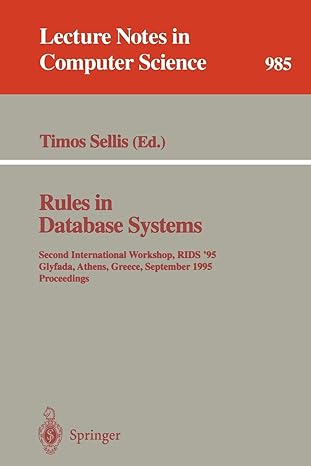Question
Sort the array A = < 3, 1, 4, 1, 5, 9, 2, 6, 5, 3, 5, 8, 9, 7 > using the Quciksort algorithm
Sort the array A = <3, 1, 4, 1, 5, 9, 2, 6, 5, 3, 5, 8, 9, 7> using the Quciksort
algorithm as given in the textbook (CLRS).
(a) Show what the array looks like after the PARTITION is called once.
(b) Tell whether the relative positions of any identical keys e.g., there are three 5s
are changed, after the PARTITION. You may want to mark the identical keys with
superscripts to differentiate them, e.g., 3^a , 1^a , 4, 1^b , 5^a , 9^a , 2, 6, 5^b , 3^b , 5^c , 8, 9^b , 7.
(c) Draw the recursion tree. In the tree, each node, corresponding to a call to the
PARTITION, has two boxes: one is filled with the input size for partitioning, and the
other is filled with number of comparisons done by the PARTITION.
(d) How many times is the PARTITION called?
(e) What is the depth of the recursion tree?
(f) How many comparisons are made?
Step by Step Solution
There are 3 Steps involved in it
Step: 1

Get Instant Access to Expert-Tailored Solutions
See step-by-step solutions with expert insights and AI powered tools for academic success
Step: 2

Step: 3

Ace Your Homework with AI
Get the answers you need in no time with our AI-driven, step-by-step assistance
Get Started


